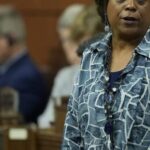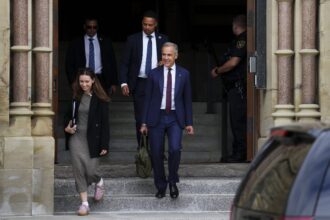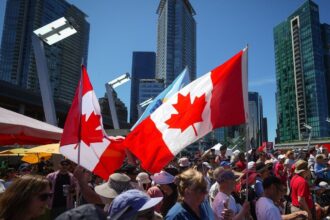The symbolism was impossible to miss as six First Nations chiefs stood before King Charles III last week, presenting the monarch with a traditional wampum belt while delivering a stark message about unfulfilled treaty promises spanning generations. This unprecedented royal audience at Buckingham Palace marks a critical moment in the ongoing struggle for Indigenous sovereignty recognition in Canada.
“We reminded His Majesty that the Crown’s honor is at stake,” said Grand Chief Abram Benedict of the Mohawk Council of Akwesasne, who led the delegation. “These treaties weren’t just agreements between parties—they represent sacred commitments made nation-to-nation that continue to bind the Crown today.”
The delegation, representing nations across Eastern Canada, traveled to London specifically to address what they describe as systemic failures by the Canadian government to uphold treaties signed directly with British monarchs dating back to the 18th century. Their mission highlights the unique legal position many First Nations maintain—that their primary relationship exists with the Crown itself, not the Canadian government.
The historic meeting lasted nearly an hour, far exceeding the typical royal audience duration. Sources close to the palace described the King as “deeply engaged” throughout the discussion, asking numerous questions about specific treaty provisions and their implementation challenges.
“His Majesty acknowledged that these treaties were made in perpetuity and remain legally binding,” noted Chief R. Donald Maracle of the Mohawks of the Bay of Quinte. “While diplomatic in his approach, the King clearly recognized the gravity of these unresolved obligations.”
The delegation presented extensive documentation detailing specific treaty provisions requiring royal attention, including rights to hunting and fishing territories, resource sharing agreements, and protection of sacred sites that have been systematically eroded through Canadian policy decisions over decades.
Legal experts suggest this direct appeal could have significant implications. “By engaging the monarch directly, these nations are correctly identifying the Crown as the original treaty partner,” explained Dr. Pamela Palmater, Mi’kmaw lawyer and professor at Toronto Metropolitan University. “This strategy sidesteps the Canadian government’s tendency to minimize these historic agreements and could potentially pressure both Buckingham Palace and Ottawa to address long-standing grievances.”
The Canadian government responded cautiously to the meeting. In a statement, Minister of Crown-Indigenous Relations Gary Anandasangaree acknowledged the “historic significance” of the audience while reaffirming that “the Government of Canada remains committed to implementing treaty obligations through established reconciliation frameworks.”
However, Indigenous leaders remain skeptical of such assurances. “We’ve heard promises for generations,” said Chief Leroy Denny of Eskasoni First Nation. “What makes this moment different is that we’ve now directly reminded the Crown of its personal obligation to honor these agreements—obligations that cannot be delegated away or forgotten.”
The timing of this royal audience is particularly significant, occurring amid growing tensions over resource development on traditional territories and continuing court battles over treaty interpretations. Just last month, the Supreme Court of Canada heard arguments in a landmark case that could dramatically reshape how historic treaties are interpreted in modern economic contexts.
Following the meeting, palace officials confirmed that King Charles has requested a comprehensive briefing on all outstanding treaty obligations between the Crown and Indigenous nations across Canada—a move observers suggest signals more than mere diplomatic courtesy.
“This isn’t just symbolic—it’s potentially transformative,” noted Chief Benedict. “The King has personal authority to influence how Canada approaches these sacred agreements, and we’ve made it clear that inaction is no longer acceptable.”
As the delegation returns to Canada, the question remains: Will this royal audience finally bridge the centuries-old gap between treaty promises and their implementation, or will it become yet another historical footnote in the long struggle for Indigenous justice?

























